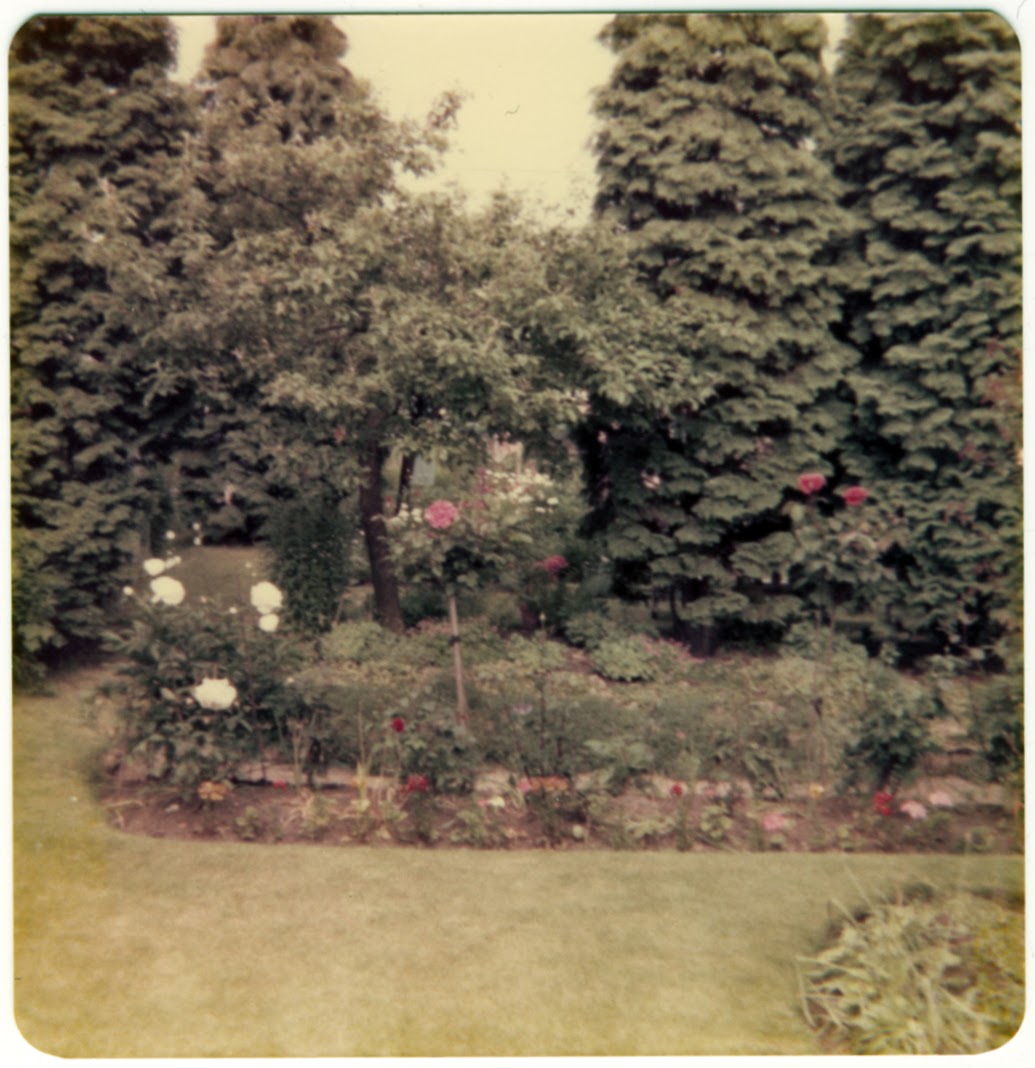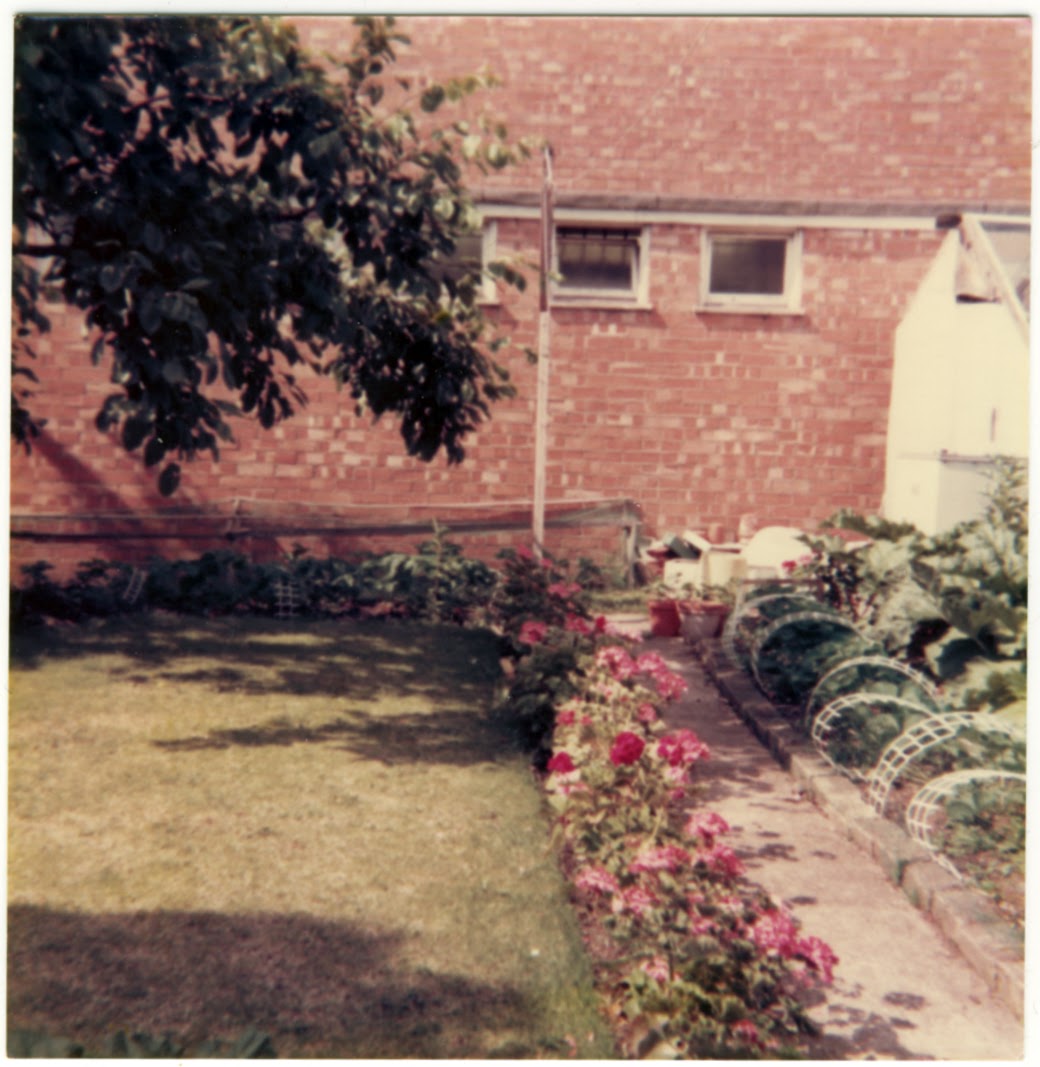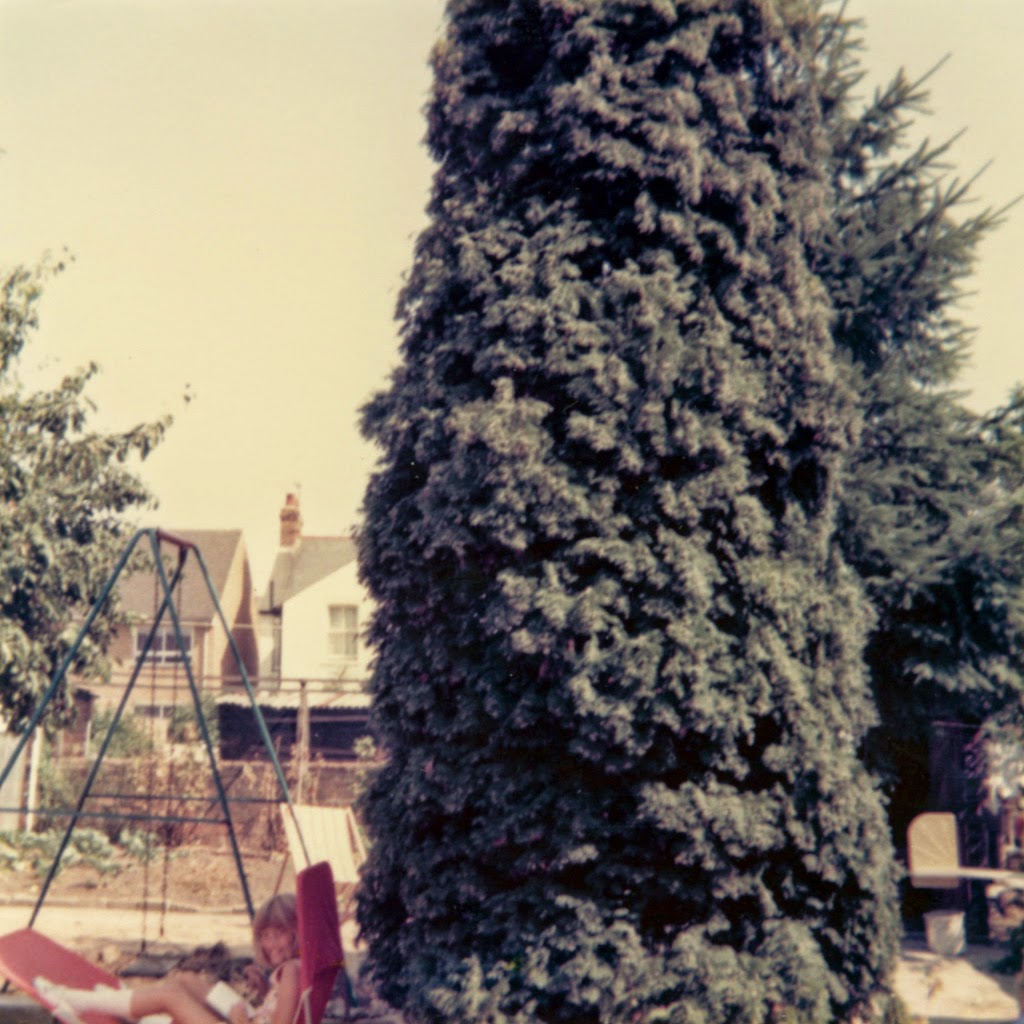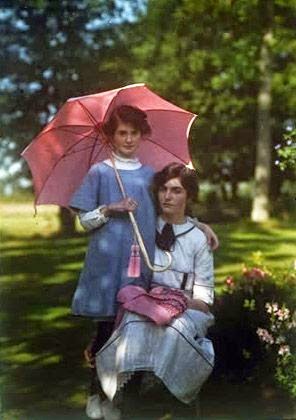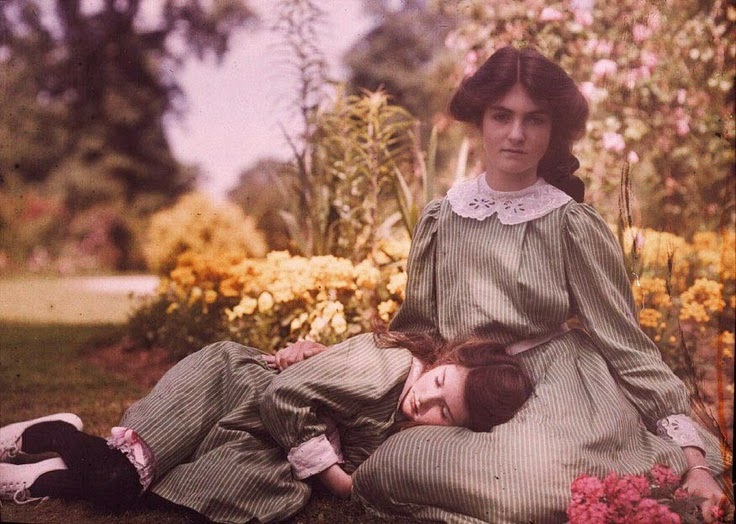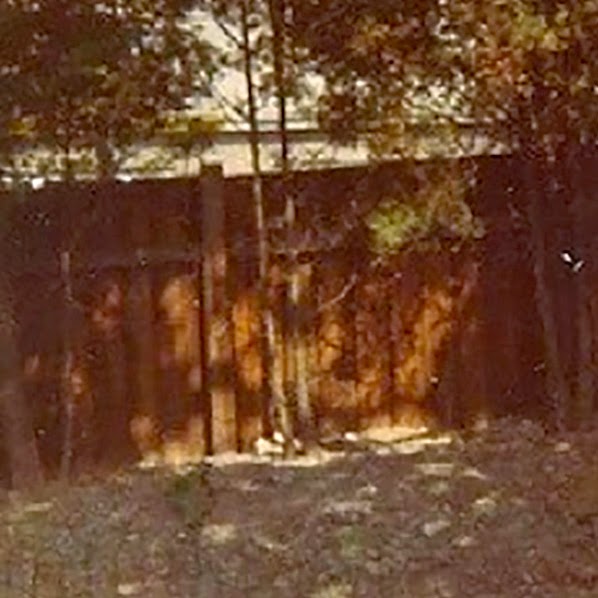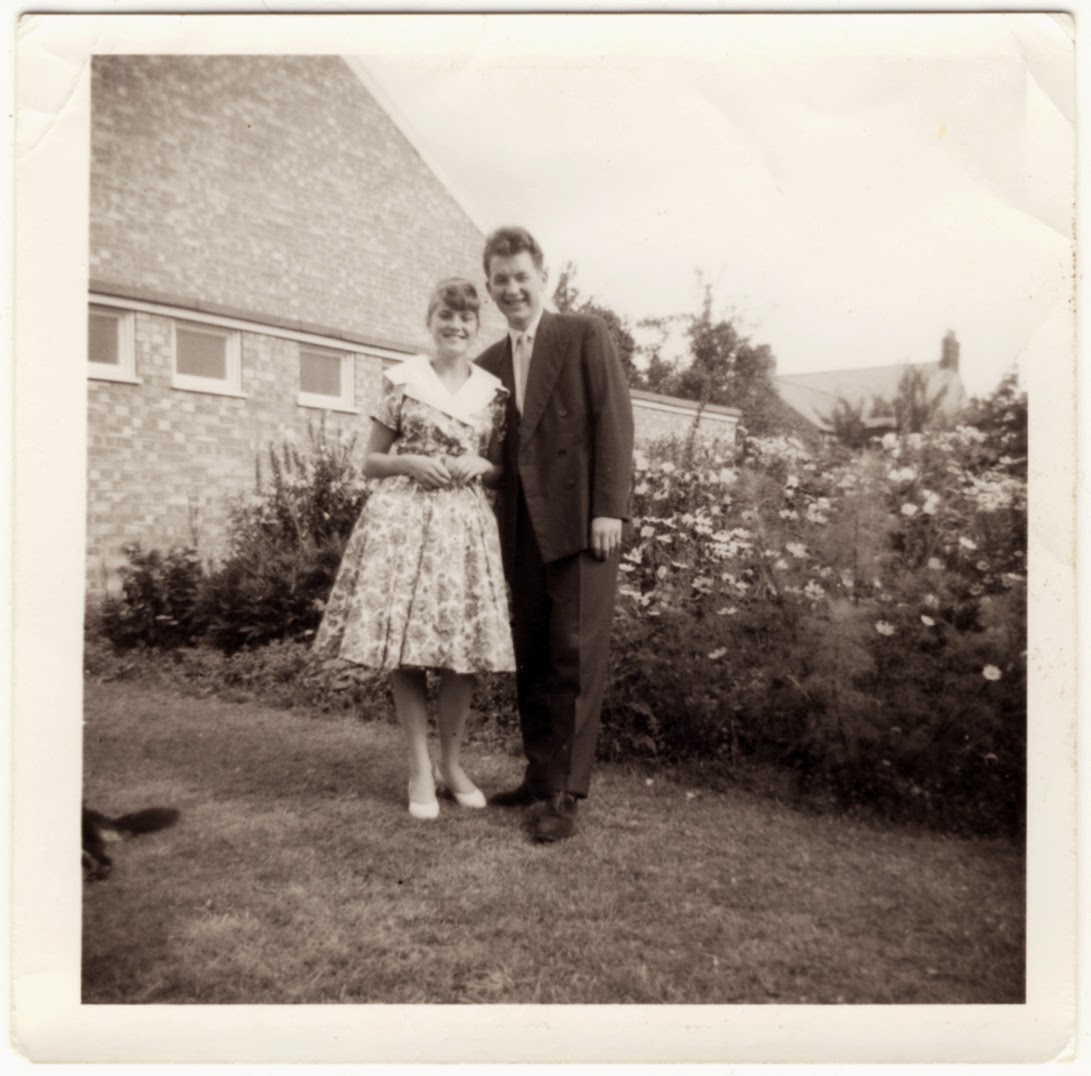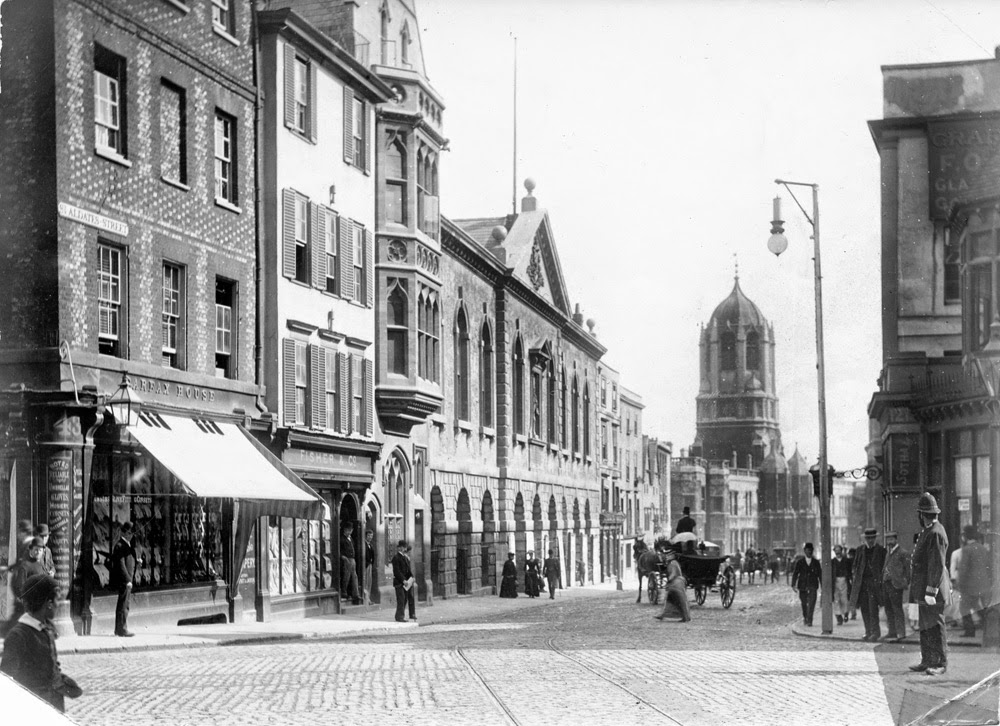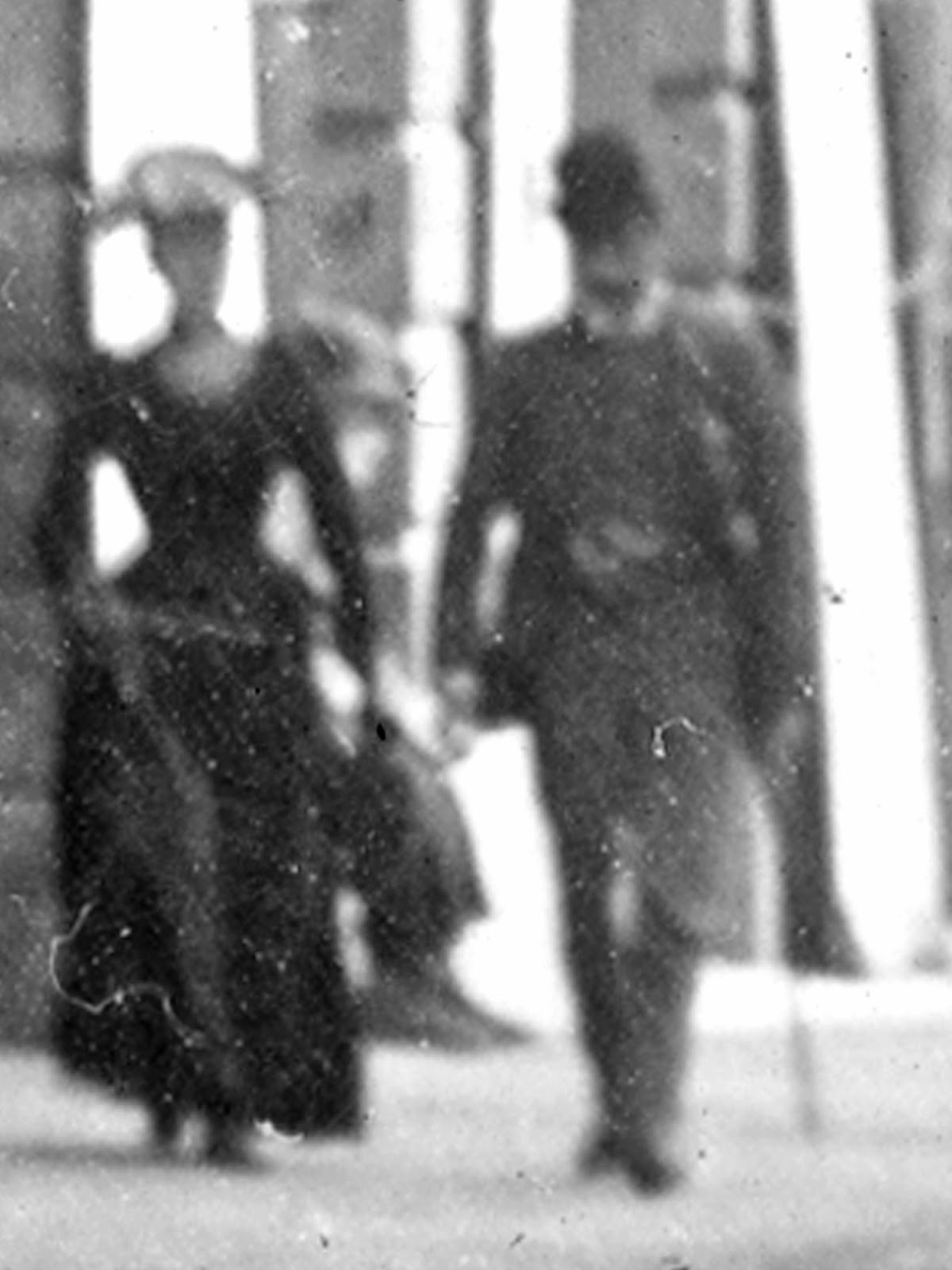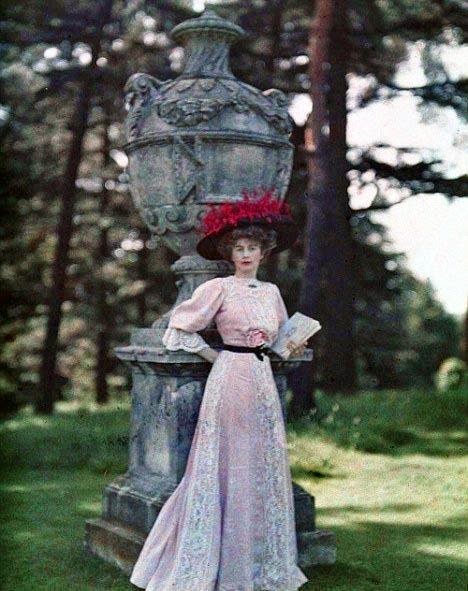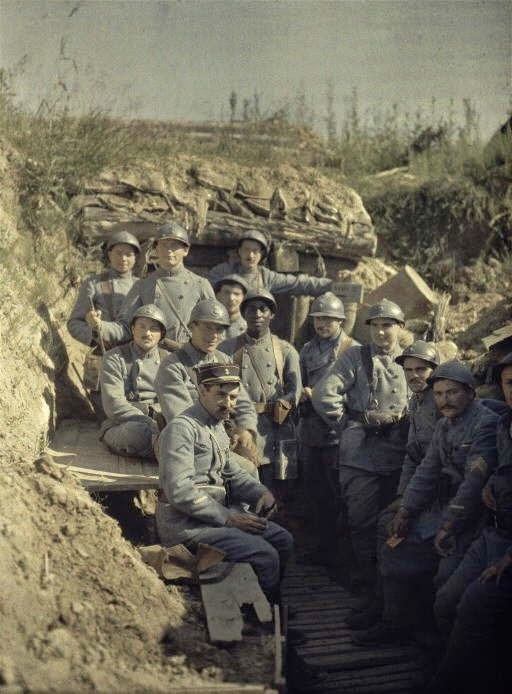As shown in a previous blog, this is a picture of my grandparents’ garden in Headington, Oxford, taken sometime in the mid 1970s.
This was, growing up, a very special place for me…
…I remember well my grandad’s vegetable patch, the plastic greenhouse and the Victoria plum tree (all shown above); the brick outhouses with their giant spiders (in which the red tricycle was kept); the large apple tree and the wooden lattice-work gate. I remember too the giant Christmas tree (pictured below behind the fir tree), planted – when the tree was considerably smaller – when my mum was a girl.
The following two photographs were also taken in Headington, some 60 years earlier at the time of the First World War (or a few years before – the second photograph is possibly 1908). They are by one of the pioneers of autochrome photography, Ethelreda Laing and show her two daughters, Janet and Iris.
The photograph below shows me and my brother in the garden of the house where we grew up, also in Headington.
